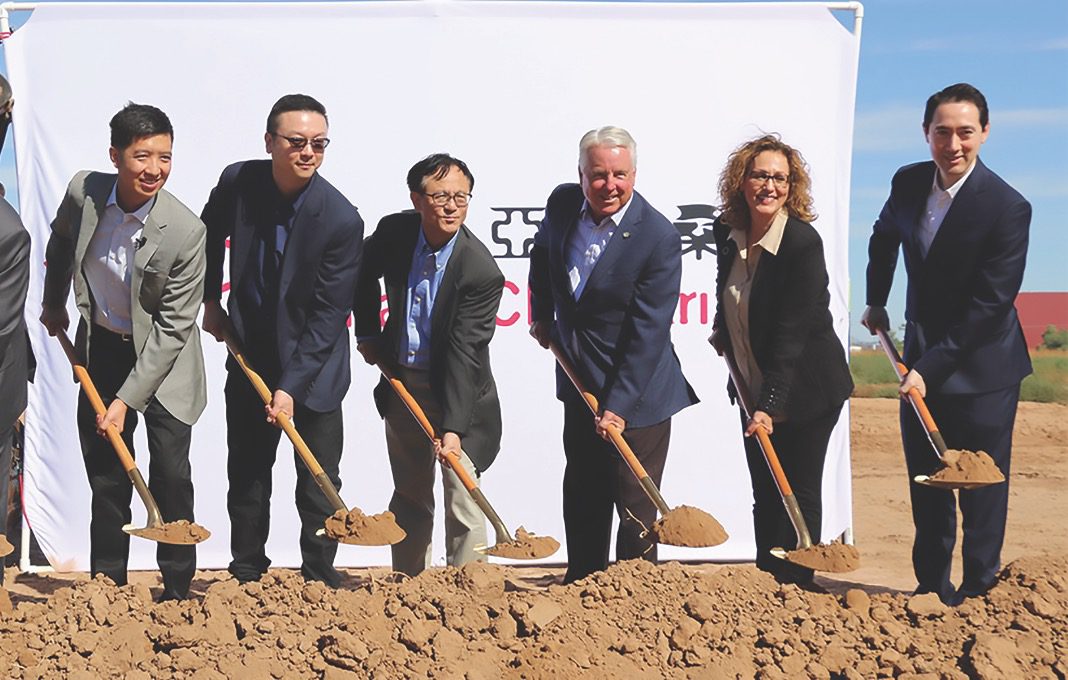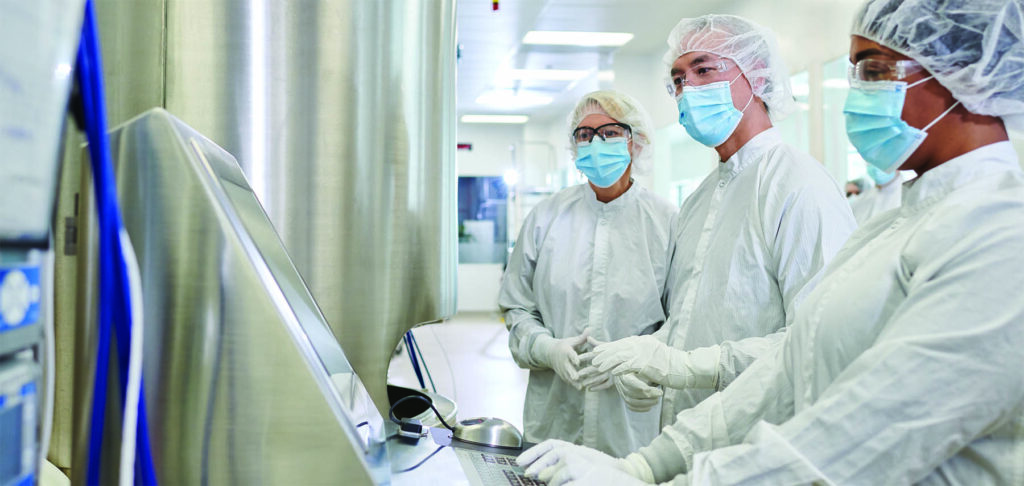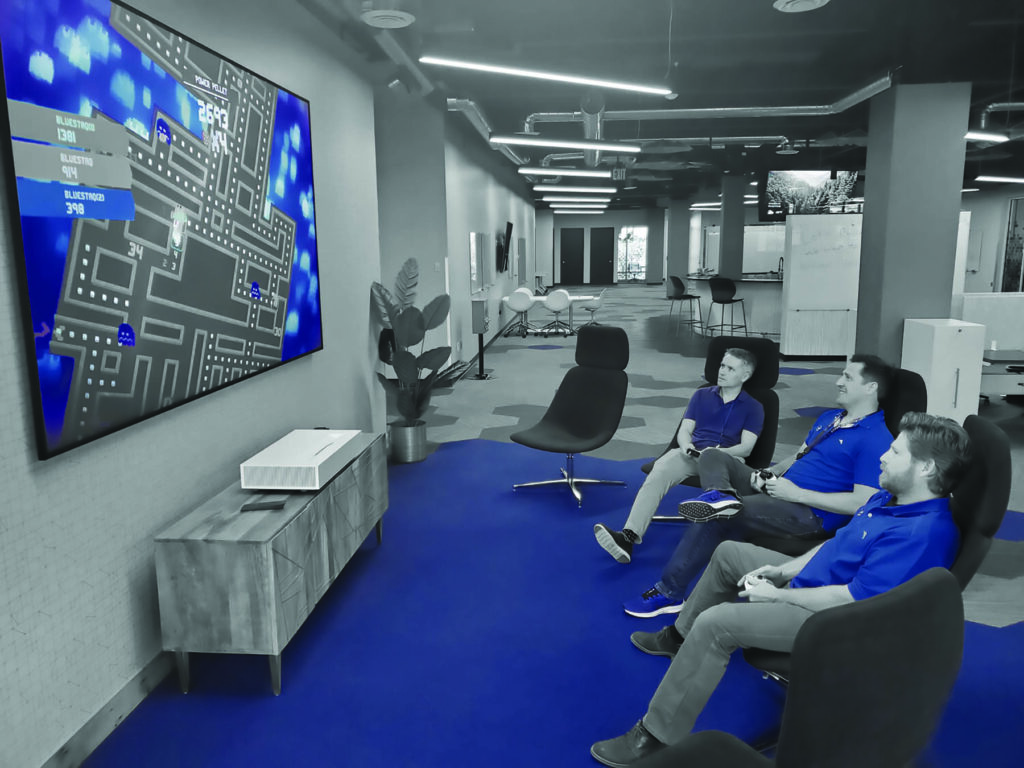


Along with the national economy, GDP growth started to slow in most states in the West and Southwest in late 2022. Nevertheless, the region continues to attract new investments in the tech industry. Semiconductor manufacturing is growing into a hot market, with big projects announced in California, Arizona, Texas and Idaho. (Numbers below refer to the state’s rank in the 2022 Chief Executive Best & Worst States for Business.)
The Lone Star State has been in a public battle for talent and companies with California for more than two years, and there’s no sign it will end soon. The Texas Economic Development Corporation has only doubled down on that theme, with content and outreach speaking to companies and residents seeking to migrate to the state. Economic development officials note that while California has the largest economy in the nation, Texas spends a greater portion of its local and state funds on education. The state also held the top spot for the number of residents added in 2020 and 2021, with half of the nation’s fastest-growing cities.
While there’s been a diverse mix of economic growth, semiconductor manufacturing is making big waves. In November 2021, Samsung announced it would build a $17 million semiconductor chip manufacturing facility and create 2,000 jobs in Taylor. Texas Instruments broke ground in May 2022 on a massive semiconductor wafer fabrication plant in Sherman that could lead to a $30 billion investment and as many as 3,000 new jobs. GlobiTech, a subsidiary of Taiwan-based GlobalWafers, also announced in June 2022 that it will open a semiconductor manufacturing facility and create 1,500 jobs in Sherman. “Texas is rapidly filling the void in semiconductor manufacturing in North America…. This means that Texas is becoming a major player in solving the chip shortage in the United States but also in ensuring the health of the nation’s energy, technical and national security sectors,” said Robert Allen, CEO of the Texas Economic Development Association.
Even as companies flock to the state for its talent and favorable business climate, it is also growing its own. Texas startups attracted more than $10 billion in 2021, more than double the total in 2020, according to data from Pitchbook and the National Venture Capital Association.

Arizona has continually climbed the Chief Executive Best & Worst States for Business ranks, jumping six spots in 2022 to rank No. 4. Phoenix continues to log substantial population and economic growth, attracting a mix of investments in the manufacturing, technology and financial services sectors.
As the semiconductor industry starts to migrate from Asia to places like California, Texas and New York, companies are also setting their sights on Arizona. In December, Taiwan Semiconductor Manufacturing Co. announced plans to open a second Arizona chip plant, raising its investment in the state to $40 billion. In October 2022, Taiwan-based Chang Chun announced it would invest $300 million in a semiconductor chemical facility in Casa Grande. Yu-hung (Calvin) Su, president of Chang Chun Arizona, said in a press release that the facility would help meet a significant expansion into the U.S. market. Yield Engineering Systems also announced a facility in the Price Corridor in Chandler to support semiconductor manufacturing.
The state is now striving to strengthen its already-favorable business climate. In October 2022, Gov. Doug Ducey directed the state department of revenue to speed up the implementation of the 2.5 percent flat tax to 2023 instead of 2024. The historic tax package protected small businesses from the threat of a 77 percent tax increase.
While fun and entertainment will always be a key industry in Sin City, Las Vegas is continually getting serious about business. A growing stream of companies is announcing expansions and investments here that have nothing to do with gambling. This past summer, Bella + Canvas, Crocs, F&N and Nova Holdings all announced new investments in southern Nevada, with the potential for another 1,000 jobs in the next five years. Other companies to announce investments in the past two years include Motional AD, Haddington Dynamics II, Crown Holdings and CAE. Tina Quigley, CEO of the Las Vegas Global Economic Alliance, said in a press release that the goal is not only to attract high-quality jobs to the region but also to help diversify the economy. “The companies receiving incentives include a data center, a manufacturing facility and a distribution warehouse, all of which fall under one of our target industries for economic diversification and consume minimal water resources,” she said.
To accommodate more than a million additional people living and driving in the area in the following next few decades, officials are planning significant infrastructure upgrades under the Access 2050 Regional Transportation Plan. Lyft and Motional are working toward launching a fully driverless robotaxi service, while the Boring Company is working on an underground public transportation system with more than 55 planned stops.

As of November 2022, Utah held the second-lowest unemployment rate in the country, 2.1 percent, compared to a national average of 3.8 percent. That’s not surprising, as it’s a top destination for talent, with the state ranking fourth in the nation for fast-growing population. Northrop Grumman remains a crucial driver in the state. In September 2020, the company and the state of Utah were awarded a $13.3 billion Sentinel defense contract to construct more than 400 new intercontinental ballistic missiles. The contract will create more than 5,000 jobs and open up new opportunities for innovation sector expansions around the campus. Professional, scientific and technical services remain one of the fastest-growing sectors in the state, said Theresa Foxley, CEO of the Economic Development Corporation of Utah. “The growth in Utah is the result of top-notch higher education institutions and a thriving innovation economy that has been expanding over the past decade,” she said.
There have been several other notable expansions in the past year. Jabil announced in early 2022 a $10 million investment and 150 new jobs in Tooele County. Cytiva announced a $231 million expansion and nearly 400 new jobs at its facility in Logan. And Morgan Stanley announced plans to expand its operations in the state and add more than 800 jobs.

The Centennial State made a giant leap in the Chief Executive Best & Worst States for Business 2022, moving seven spots from No. 20 to No. 13. Aerospace remains a crucial industry here, with more than 500 companies in the aerospace system directly or indirectly employing more than 274,000 residents. U.S. Space Command is headquartered at Peterson Space Force Base, and the state is home to companies like Boeing, DISH, Ball Aerospace, Ursa Major and Maxar Technologies. In March 2022, Bluestaq announced a large expansion in the state that will create more than 585 jobs. “Colorado’s aerospace ecosystem is supported by our state’s Advanced Industries program, and we continue to lead the country with cutting-edge innovation, four military commands and some of the nation’s most renowned research laboratories and universities,” said Michelle Hadwiger, director of OEDIT’s Global Business Development division. “The expansion of Bluestaq helps the state drive innovation and grow this sector even further, and we’re thrilled to see this company choose Colorado as the home of its expansion.”
While the aerospace industry flies high, Colorado’s economy continues to diversify on the ground with several interesting announcements in the past year. Australian ticketing platform Humanitix, agriculture company Greenfield Holdings and Virta Health all announced they would locate their quarters in Denver.
Idaho rose five spots in the Chief Executive Best & Worst States for Business 2022. The science and technology sectors are driving most of the growth. Bringing semiconductor manufacturing back to the U.S. is shaping up to be a big win for many states in the West, including Idaho. Boise-headquartered Micron recently announced a $15 billion investment and 2,000 jobs at a facility in Boise in a major expansion. “Micron is a true homegrown Idaho success story…. We are grateful for Micron’s continued support of Idaho and our capital city, and we look forward to the opportunities this historic business expansion will bring to the citizens of our state,” said Idaho Gov. Brad Little. As part of its commitment to the state, it will funnel additional investments to expand K-12 STEM education and deepen its partnership with universities. The company is also opening a world-class childcare facility for its growing employees.
In addition to the momentum in the semiconductor space, food processing and advanced manufacturing are two other fast-growing sectors. Last fiscal year, 16 companies either expanded or moved to the state due to the pro-business climate and economic resiliency.

Like many of its neighbors, the Treasure State is also finding opportunities to capitalize on the growing semiconductor industry. Applied Materials, a leader in energy solutions to produce chips and advanced displays, announced another major expansion in Flathead Valley in May 2022. The company’s new location in Evergreen will be used to manufacture subassemblies and process equipment for semiconductors. The project is expected to add more than 200 jobs to the 600 employees the company already has in the region. “Montana’s business-friendly environment, unmatched quality of life and hardworking and talented workforce make our state an ideal place to innovate, create and do business,” said Gov. Greg Gianforte in a press release.
Hyundai Motor Group also announced in May 2022 that it will open a $20 million research and development center in Bozeman. Located within the Montana State University Innovation Campus, the center will serve as Hyundai’s New Horizons Studio headquarters to focus on developing Ultimate Mobility Vehicles (UMVs).
As the market for fossil fuels changes globally and closer to home, Wyoming is quickly positioning itself to embrace and capitalize on a decarbonized economy. In 2021, Gov. Mark Gordon unveiled a state target of reaching net-zero emissions by 2050 through an “all-of-the-above” energy mix. This means simultaneously supporting existing extraction industries like oil and gas while also dedicating time, resources and energy to finding new opportunities in energies like nuclear, hydrogen and carbon capture. “Wyoming has it all: the best wind, solar, gas, coal, nuclear and the ability to store 50 years’ worth of our nation’s total carbon emissions,” said Gordon in a press release. “Innovation, not regulation, is our way forward to give our nation the energy it requires and simultaneously solve the world’s climate concerns.”
TerraPower, a nuclear innovation company from Bellevue, Washington, announced late last year plans to build a demonstration project in Kemmerer. Oklahoma-based Williams Companies partnered with the University of Wyoming School of Energy Resources Hydrogen Energy Resource Center to explore production opportunities in the state’s southwest corner. Additionally, in Gillette, there are three projects addressing different aspects of carbon capture.
The Land of Enchantment continues to capitalize on its momentum in the film industry and in cross-border commerce. As changes in the global supply chain have shifted more commerce to materials and manufacturing to Mexico, the Borderplex (which includes El Paso, Las Cruces, and Juárez) continues to grow as a hub for logistics and manufacturing. In March 2020, New Mexico announced another $60 million investment in the region to support economic development and global trade. A 2021 economic impact report from the BIA, the NMSU Center for Border Economic Development and the Arrowhead Center found that, in 2020 alone, the employment and infrastructure investments at the Santa Teresa Port of Entry and Industrial Park supported more than 5,000 jobs and contributed a $959 million economic impact to the state.
Meanwhile, New Mexico continues to diversify its economy with new projects in manufacturing, tech and other sectors. Universal Hydrogen announced in March 2022 that it would build a manufacturing and distribution center and create hundreds of jobs in Albuquerque. Engineering company BlueHalo was awarded a $1.4 billion government contract in July 2022. The deal is expected to create 60 jobs. And California-based company 828 Productions announced in August 2022 plans to invest $3 million to establish a headquarters in Las Cruces.
In the summer of 2022, Business Oregon announced the completion of its Plan for a Balanced Economic Recovery, a report that looked at how the agency and state government can support equitable outcomes as Oregon recovers from the pandemic. The plan is built on a foundation of input from a broad list of stakeholders, including 220 participants in six regional forums, 120 people in focus groups and 289 survey responses. The resulting recommended strategies to address the issues increase greater access to capital and extend the broadband infrastructure. The plan also recommends adopting existing infrastructure funding programs to incentivize municipally owned residential infrastructure and to work with private industry to improve childcare access.

Washington continues to leverage its giant homegrown tech companies to foster new growth around Seattle and Tacoma. In April 2022, Google opened the first phase of its Kirkland Urban campus, which will eventually occupy four buildings and more than 760,000 square feet. The Puget Sound already hosts the company’s second-largest
engineering workforce with 7,200 employees, just behind the Bay Area in California. The company will eventually invest more than $100 million into the area. “Google’s ongoing investment in Seattle and Kirkland demonstrates that Washington continues to be one of the best places in the nation to live and work,” said Gov. Jay Inslee at the opening.
The state continues to maintain momentum as a hub for tech and startups. 2020 was a record year for IPOs, with more than 15 companies announcing initial public offerings, compared to one in the previous four years. Several unicorn startups have now exceeded the billion-dollar valuation mark. In January 2022, recruiting tech platform startup SeekOut raised another $248 million to gain a $3.5 billion valuation. Other startups in the billion-dollar club include Amperity, Helion, Convoy and Outreach.
It’s hard to miss the news that the Golden State is all in on clean energy. In August 2022, California announced the Advanced Clean Cars II rule, which set forth a roadmap to ensure that by 2035, all vehicles sold in the state will be zero-emission. While many states have set similar targets, California’s are the most aggressive and essentially ban the sale of gas vehicles by 2035.
However, the new legislation provides incentives for automakers and consumers to help sweeten the deal. Consumers can get a tax credit of up to $9,500, while automakers are already considering new market opportunities. Many EV companies and EV battery manufacturers have been migrating to the Golden State. Rivian Automotive moved its headquarters to Irvine and Tustin in 2020 to consolidate its engineering teams. Lordstown Motors, another electric truck manufacturer, also opened a West Coast service center in Irving earlier this year. Vietnamese electric vehicle company VinFast is investing $200 million in a U.S.- based headquarters in Los Angeles. And in Silicon Valley, other companies working on EVs include Seres, ChargePoint, Lucid Motors, Byton and Mercedes-Benz.

0

1:00 - 5:00 pm
Over 70% of Executives Surveyed Agree: Many Strategic Planning Efforts Lack Systematic Approach Tips for Enhancing Your Strategic Planning Process
Executives expressed frustration with their current strategic planning process. Issues include:
Steve Rutan and Denise Harrison have put together an afternoon workshop that will provide the tools you need to address these concerns. They have worked with hundreds of executives to develop a systematic approach that will enable your team to make better decisions during strategic planning. Steve and Denise will walk you through exercises for prioritizing your lists and steps that will reset and reinvigorate your process. This will be a hands-on workshop that will enable you to think about your business as you use the tools that are being presented. If you are ready for a Strategic Planning tune-up, select this workshop in your registration form. The additional fee of $695 will be added to your total.

2:00 - 5:00 pm
Female leaders face the same issues all leaders do, but they often face additional challenges too. In this peer session, we will facilitate a discussion of best practices and how to overcome common barriers to help women leaders be more effective within and outside their organizations.
Limited space available.

10:30 - 5:00 pm
General’s Retreat at Hermitage Golf Course
Sponsored by UBS
General’s Retreat, built in 1986 with architect Gary Roger Baird, has been voted the “Best Golf Course in Nashville” and is a “must play” when visiting the Nashville, Tennessee area. With the beautiful setting along the Cumberland River, golfers of all capabilities will thoroughly enjoy the golf, scenery and hospitality.
The golf outing fee includes transportation to and from the hotel, greens/cart fees, use of practice facilities, and boxed lunch. The bus will leave the hotel at 10:30 am for a noon shotgun start and return to the hotel after the cocktail reception following the completion of the round.